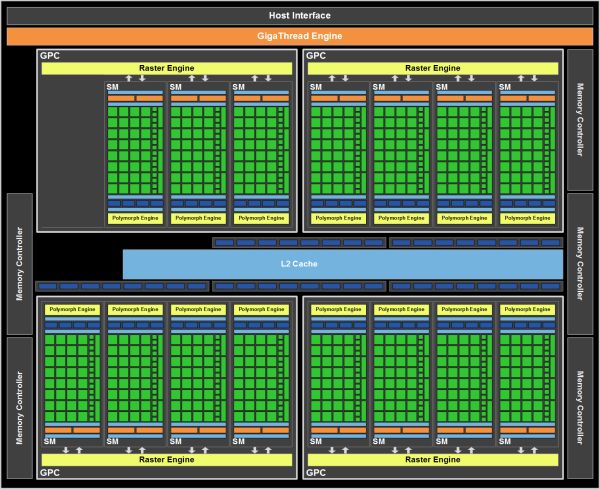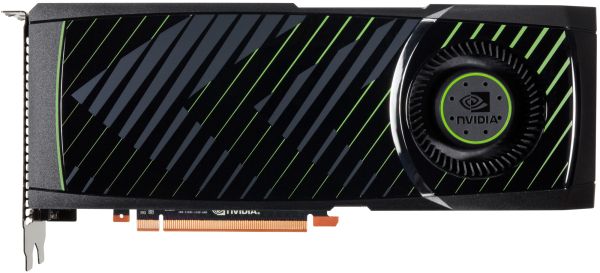NVIDIA's GeForce GTX 570: Filling In The Gaps
by Ryan Smith on December 7, 2010 9:00 AM ESTNVIDIA can be a very predictable company at times. It’s almost unheard of for them to release only a single product based on a high-end GPU, so when they released the excellent GeForce GTX 580 last month we knew it was only a matter of time until additional GTX 500 series cards would join their product lineup.
Now less than a month after the launch of the GTX 580 that time has come. Today NVIDIA is launching the GeForce GTX 570, the second card to utilize their new GF110 GPU. As the spiritual successor to the GTX 470 and very much the literal successor to the GTX 480, the GTX 570 brings the GTX 580’s improvements to a lower priced, lower performing card. Furthermore at $350 it serves to fill in the sizable gap between NVIDIA’s existing GTX 580 and GTX 470 cards.
So how does NVIDIA’s latest and second greatest stack up, and is it a worthy sibling to the GTX 580? Let’s find out.
| GTX 580 | GTX 570 | GTX 480 | GTX 470 | |
| Stream Processors | 512 | 480 | 480 | 448 |
| Texture Address / Filtering | 64/64 | 60/60 | 60/60 | 56/56 |
| ROPs | 48 | 40 | 48 | 40 |
| Core Clock | 772MHz | 732MHz | 700MHz | 607MHz |
| Shader Clock | 1544MHz | 1464MHz | 1401MHz | 1215MHz |
| Memory Clock | 1002MHz (4008MHz data rate) GDDR5 | 950MHz (3800MHz data rate) GDDR5 | 924MHz (3696MHz data rate) GDDR5 | 837MHz (3348MHz data rate) GDDR5 |
| Memory Bus Width | 384-bit | 320-bit | 384-bit | 320-bit |
| Frame Buffer | 1.5GB | 1.25GB | 1.5GB | 1.25GB |
| FP64 | 1/8 FP32 | 1/8 FP32 | 1/8 FP32 | 1/8 FP32 |
| Transistor Count | 3B | 3B | 3B | 3B |
| Manufacturing Process | TSMC 40nm | TSMC 40nm | TSMC 40nm | TSMC 40nm |
| Price Point | $499 | $349 | ~$400 | ~$240 |
The GTX 570 is likely the closest thing we’ll see to a GF110 version of GTX 480 – or any other GF100 card for that matter. With the higher yields afforded by the GF110 design and TSMC’s process improvements, we’ve already seen NVIDIA go for a fully operational GF110 design in the GTX 580, so the GTX 570 works from there. The end result is a melding of the GTX 480’s shader count with the GTX 470’s ROP count and memory bus, and with a clockspeed a bit over GTX 480 and well over GTX 470, performance is much closer to the GTX 480 than the GTX 470.
With 15 of 16 SMs enabled, the GTX 570 matches the GTX 480 at a total of 480 active CUDA Cores and 60 texture units. The core clock is 732MHz, 32MHz (4.5%) over the GTX 480 in order to make up for the reduced ROP/memory blocks and to take advantage of GF110’s lower leakage at higher clocks (as a minor aside, why the strange clocks lately? Look to the PLL). Meanwhile the memory system uses the same 320bit (64bit x 5) memory bus & 10 memory chip configuration we saw on the GTX 470, however this time the memory clock is up to 950MHz (3.8GHz data rate), 113MHz (13.5%) over the GTX 470. Memory clocks are also marginally faster than the GTX 480 by 26MHz, but this isn’t nearly enough to make up for the narrower memory bus. Finally we have the ROPs, which share an existence with both the core and memory subsystems and split the difference – it’s the same 60 ROPs and 640KB of L2 cache as the GTX 470, but because the ROPs run on the core clock they’re running 125MHz (20.5%) faster than the GTX 470.
Since it’s based on GF110, GTX 570 also shares the same architectural enhancements we first saw in the GTX 580. This means GTX 570 can retire twice as many FP16 texels per clock as GTX 480, and it also features NVIDIA’s improved Z-culling system. For the GTX 570 this helps to further close the potential performance gap between the GTX 570 and GTX 480 that results from the lower ROP count and narrower memory bus. Do note however that compared to the GTX 470 the overall improvements are asymmetric: we’re looking at around a 30% theoretical improvement in shading/compute/texture performance, but only a 13.5% improvement in memory bandwidth, so unlike the GTX 580 and its balanced approach, the difference on the GTX 570 is going to be greater on shader-bound games and applications, and lesser when we’re memory bandwidth limited.
As the GTX 470’s successor, the GTX 570 generally fits in the same power and noise profile as the GTX 470. NVIDIA puts the TDP at 219W – a mere 4W over GTX 470 – highlighting the fact that NVIDIA has gone for maximizing performance within their selected power profile for the GTX 570, versus increasing performance but also decreasing power consumption to the GTX 580. The card is otherwise identical to the GTX 580 – the GTX 570 uses the same PCB, the same vapor chamber cooler, and the same shroud as the GTX 580.
NVIDIA is putting the MSRP for the card at $349, a price that in recent weeks has been vacant as neither NVIDIA or AMD had a product to put between the 480/470 and 5970/5870 respectively. Coming from the top-end of the market this is more or less a nice price drop for GTX 480-like performance, but it also means the Radeon 5870 and GTX 470 are the GTX 570’s value threats – the 570’s a good bit faster, but they’re nearly $100 cheaper. The only other competition for the GTX 570 for now will be the GTX 460 1GB SLI and the Radeon HD 6850 CF.
Today’s launch should be a hard launch. Going in to the GTX 580 launch we had our doubts that NVIDIA could have so many GF110 products ready on such short notice, but they were able to prove us wrong there and we’re willing to take them at face value on this. Based on their own estimates and the lower price of the GTX 570 we’d expect some cards to sell out, but availability shouldn’t be an issue.
Finally, with the launch of the GTX 570, NVIDIA’s lineup will be shifting. GF110 is a very effective replacement for GF100 and NVIDIA will be looking to phase out GF100 cards as quickly as they reasonably can. The GTX 470 will still be around for quite some time (all indications are that NVIDIA still has a lot of GF100 chips left) but GTX 480’s days are numbered.
| Winter 2010 Video Card MSRPs | ||
| NVIDIA | Price | AMD |
| $500 | ||
| $470 | Radeon HD 5970 | |
| $410 | ||
| $350 | ||
|
|
$250 | Radeon HD 5870 |
| $240 | Radeon HD 6870 | |
| $180-$190 | Radeon HD 6850 | |












54 Comments
View All Comments
Taft12 - Tuesday, December 7, 2010 - link
Game, set and match. It will take a long time for Anandtech to redevelop its reputation.7Enigma - Tuesday, December 7, 2010 - link
Seriously? We're still going to preach on this topic? I was one of those in disagreement with the way they handled the launch of the AMD 68XX series cards, but let it die already. This is a LAUNCH article and it deals with the design of the card and the performance of the reference card. As such it should not contain comparisons to OC'd cards.....not AMD nor NVIDIA. In a follow-up article, however, it should be compared to non-reference designs from both camps.If, when the AMD 69XX series cards come out and they include OC'd Nvidia cards, THEN you can rant and rave. But I can guarantee you there is no way they would do that after the fallout of the previous launch.
So I politely ask that you stop.
Kef71 - Tuesday, December 7, 2010 - link
Yes, seriously. Was there ever any official statement if OC cards would be used in GPU launches? I didn't see any but on the other hand anandtech has not been in my bookmark list for a while...strikeback03 - Tuesday, December 7, 2010 - link
Yes, there was, they said because of d-bag comments like yours they would ignore a sector of the market and only provide some of the possible competitors for new products.Kef71 - Tuesday, December 7, 2010 - link
If you really need to be rude, at least spell out "douchebag".slacr - Tuesday, December 7, 2010 - link
I was just wondering why there are no starcraft2 performance figures in the review.Understandably there is no "benchmark" feature implemented in the game and they are annoying and time consuming to run and of course the card can handle it. But it is the only game some of us play and the figures may help guide us to see if it's "worth it".
nitrousoxide - Tuesday, December 7, 2010 - link
It's a more CPU-bound game so it cannot perfectly reflect the difference in GPU performanceRyan Smith - Tuesday, December 7, 2010 - link
I'm still in the process of fully fleshing out our SC2 benchmark. Once the latest rendition of Bench is ready, you'll find SC2 in there.tbtbtb - Tuesday, December 7, 2010 - link
The GTX 570 is now available for pre-order on Amazon for 400$ (http://amzn.to/e89Oo2)Oxford Guy - Tuesday, December 7, 2010 - link
Where is it, especially minimum frame rate testing?While it's nice to see minimum frame rates for Crysis, it would be nice to see them for Metro as well.